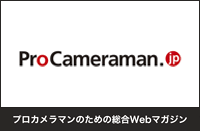Todd McLellanの作品から

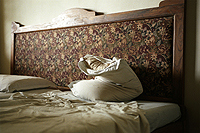 
▲トッド氏が最も好きだという枕の作品(クリックで拡大)
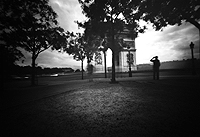 
▲こちらもお気に入りのパリで撮影した作品(クリックで拡大)
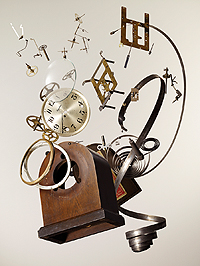 
▲「ディスアセンブリ(解体)シリーズより(クリックで拡大)
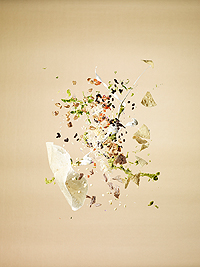 
▲同じく解体シリーズより(クリックで拡大)
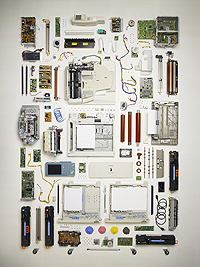 
▲同じく解体シリーズより(クリックで拡大)
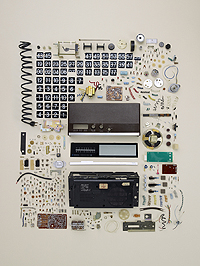 
▲同じく解体シリーズより(クリックで拡大)
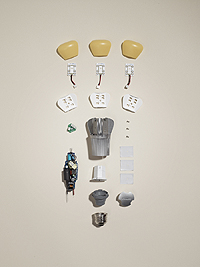 
▲同じく解体シリーズより(クリックで拡大)
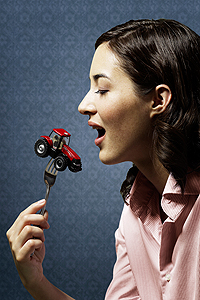 
▲広告用写真より(クリックで拡大)
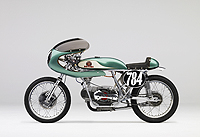 
▲同じく広告用写真より(クリックで拡大)
|
|
●Profile プロフィール
Todd McLellan(以下トッド・マクレアン)は、高校卒業後、興味のあったグラフィックデザインの道へ進む。カナダのアートカレッジ、アルバータカレッジアート&デザインで勉強。当初、デザインのコースを専攻するも、その後写真科に専攻を変更。2002年にBFA取得し、卒業後、広告写真の道に進むためトロントに移る。以後、広告写真業界で活躍し、スギノスタジオとパートナーシップを組む。近年のdisassembly series (解体シリーズ)では自身のパーソナルワークを新しいレベルに発展させ、世界各国より注目を集めている。
●Biography バイオグラフィー
Q1: いつ、どこで生まれましたか?
カナダのサスカチュワン州。金色の小麦畑の中にあるサスカトゥーンという小さな町です。
Q2:写真を始めたのは何歳の頃ですか? 何故写真に興味を持ったか覚えていますか?
私が写真を撮り始めたのはカメラをつかむことができるようになった頃からです。多分8歳くらいだったと思います。祖父母から110カメラを遊ぶために与えられました。フィルムをもらえたときは入れて撮りました。最近、祖父母が私が小学校の小旅行のときに撮った写真を私にくれました。私の父と叔父はいつも写真に興味があり、若い頃はたくさん写真を撮っていました。私の父は自然が大好きで、今でも自然を被写体として撮っています。
Q3:最終学歴を教えてください。
私はカレッジにグラフィックデザインを勉強しに行ったのですが、1年で専攻を写真に変えました。写真の方がもっと自由に世界を探検することができると思ったからです。
Q4:若い頃に影響を受けた表現はありますか? 例えば写真家、映画、音楽などで夢中になったアーティストやミュージシャンはいますか?
いないとは言えないし、たぶん影響を受けたと思います。もし、影響を受けた人の名前を挙げろと言われればできないですけど。私はハードコアラップを聴きますが、自分の作品にその影響はまったく見えないです。
Q5:写真を職業にした理由はなんですか? 他の職業を考えたことはありますか?
他の職業を考えたことはないですね。高校を卒業した後に数年休んで、自分に何ができるのかを体験しました。でも私はグラフィックデザインをどうしても勉強したくて、最初にそれを試みました。当時はまだ、写真は趣味として撮るもので、キャリアとして考えることはできませんでした。
Q6:日本で知っている写真家はいますか? その人のどんなところを評価していますか?
もちろん、荒木経惟氏です。彼の作品は、アーティスティックで論議を呼ぶ官能的なものだと思います。ですが、私は山本昌男氏の作品の方が、写実的な感覚でもっと好むスタイルです。
●Work 活動内容:
Q7:現在興味ある被写体や撮影テーマは何ですか?
古い物を再利用するか、その物が意図する仕様ではなく、それから新しいものを創り出すことです。
Q8:現在、商業写真と作家活動、どちらが主体ですか?
両方が50%ずつに近づいて来ています。私は、パーソナルワークは自分だけに留め、これまで広告写真に力を入れてきました。ですが、最近のパーソナルシリーズは公に発表しました。
Q9:最近はデジタル一眼でもムービーが撮れますが、ムービーに関する仕事や活動は行っていますか?
何作か広告のプロジェクトで撮りました。そのほとんどが大きな映像用のデジタルカメラですが。一眼レンズカメラが可能とする映像の自由さは好きですが、スチルカメラマンがそれで良い映像を得るのはとても大変なことです。
Q10:ご自分のこれまでの作品でベスト3と思うものを挙げてください。それぞれの選定理由や思い出も教えてください。
(1)ベッドの上で枕が曲がっている写真です。これは、3週間旅行をした後、インドのゴアで撮ったものです。懐かしい想い出が蘇るとともに、自分がこの時に感じていた気持ちを表しています。
(2)ぼんやりと写るシャンゼリゼ通りと、それを男性が見下ろしている写真です。上と同様、ほとんどの写真が自分がその時撮った時の想い出を蘇らせてくれます。これは、ピンホールカメラで撮影し、何時間もこの撮影をするために待ちました。その場所に人が歩いてくれるまで待った末、思い通りパーフェクトなショットになりました。
(3)すべてのディスアセンブリ(解体)シリーズです。これは、今まで自分が撮ってきた静物で一番大きいプロジェクトです。私は、まだ完全に使用可能な物だけど、もう使用されない古いオブジェクトに命を吹き込みたかったのです。
●Tools 現在の道具
Q11:フイルムカメラは何をお使いですか? 具体的なメーカー名や製品名を教えてください。複数あればできるだけ書いてください。
本当はもう長い間使用していないのですが、フィルムのカメラで私が使うのはHolga、P-SharanとRed Army Cameraです。
Q12:フイルム名とその理由を教えてください。
色鮮やかなフジが好きですが、フィルムで撮る時は、まだ使用可能な何本かIllford B&Wのフィルムを持っています。
Q13:デジタルカメラは何をお使いですか? 具体的なメーカー名や製品名を教えてください。複数あればできるだけ教えてください。
私はハッセルブラッドの555 ELDとデジタルバックにPhase OneのP45を使用しています。キヤノンの5D Mark IIもよく使用します。最近、フジフイルムのX10を購入して、それを一番良く持ち歩いています。
Q14:現在のメインのカメラはなんですか? その理由も教えてください。
絶対ハッセルブラッド555ELDとデジタルバックです。ほとんどの時間をスタジオで過ごすので、これが私のカメラです。
Q15:現在お使いのアクセサリー(三脚/一脚、ストロボ、プリンタなど)を教えてください。
私はスギノスタジオというカナダで一番大きなスチル&映像プロダクションスタジオとパートナーシップを組んでいます。なので幸運なことにたくさんの良い機材を使って仕事をすることができます。ですが自分にとって一番の要素はブロンカラーのライトです。ブロンカラーのクオリティと正確性を超えるものはありません。
Q16:その他撮影に欠かせないカメラ関係の道具はありますか?
ブロンカラー!
Q17:デジタル写真の場合、ソフトウェアは何をお使いですか。例えばPhotoshopやCapture Oneなど?
正にその2つです。私は今ベータ段階の新しいPhotoshopを使用していて、それが入手可能になったらそれに移ります。またCapture One 6は、iPadから遠隔操作ができるのが素晴らしいです。
Q18:現像はご自分で行いますか?
B&Wを撮ったときはいつでもやります。最後にフィルムをラボに持って行ったのはいつのことか覚えていません。
Q19:レタッチはご自分で行いますか? なぜ自分でレタッチをするのか、またはしないのか教えてください。
自分の作品をレタッチするのは楽しいです。私はアートの延長線だと思っています。特に、デジタルカメラで撮影する時です。そうは言ったものの、私は2人の素晴らしいデジタルアーティストと作業をしていて、ほとんどの私の広告の写真は彼らにレタッチをお願いしています。
Q20:フイルムとデジタル、どちらが好きですか? またそれぞれの長所、短所をお聞かせください。
断然デジタルカメラを選びます。私はいちいちシャッターを切る度にモニターを見ないように訓練しています。モニターを確認するのは悪い習慣で、自分の本能的な創作感覚を失います。だから、私はモニターをオフにできるフジフイルムのカメラが好きです。
●Schedule 今後の活動
Q21:2012年の活動予定をお聞かせください(展覧会、プロジェクトや出版など)
現在、私は2013年の春に出版予定の本のために制作しています。長い道のりですが、このプロジェクトでしばらくの間忙しそうです。
Q22:今後撮ってみたい被写体はなんですか?
私は物体を撮るのが大好きです。範囲は広いですが、車から人までです。
Q23:日本の若手のフォトグラファーに一言お願いします。
撮り続けて探索すること。だけど、イメージを編集することを忘れないように!
−−ありがとうございました。
●Todd McLellan
Todd McLellan has always been interested in graphic design and began to pursue after graduating from high school. He attended a Canadian art college called Alberta College of Arts & Design. He originally studied the design courses and later he shifted his studies to Photography. After graduating with a Bachelor of Fine Arts in 2002, he moved to Toronto to pursue his career in commercial photography. Ever since he primarily worked in the advertising photography scene and partnered with Sugino Studios (suginostudio.com). In his latest disassembly series, he successfully took his personal work into the next level and the work is getting attentions from many different countries in the world.
●Questionnaries
Q1: When and where you were born?
Amongst the golden wheat fields of Saskatchewan in a small city called Saskatoon.
Q2: How old were you when you started taking photographs? Do you remember how you became interested in taking pictures? Were there anything else you are interested in back then along with photography?
I started photographing things when I could get ahold of a camera. I think I was around 8 ? I was given my grandparents 110 camera to play with. When I could get film in it I would. They actually just gave me some photos I shot on an elementary school trip. My Father and his brothers were always interested in photography and would shoot a lot when they were younger. My father loves nature and still shoots that to this day.
Q3: What is your academic background? Did you major in photography?
I went to college to pursue graphic design but after a year I changed my major to Photography. I felt it allowed me the freedom to explore the world more.
Q4: When you were young, did you get influenced from any artists, movies or musicians?
I couldn’t say no, I must have been. If I had to put names to those influences I couldn’t. I listened to hard core rap but I don’t see that in my work at all.
Q5: Why did you choose to be photographers (artists)? Have you ever considered any other professions?
Not really, I had taken a couple years off after high school just to see what’s out there. I really wanted to do graphic design and that’s what I attempted. I didn’t really think of photography as a career but only something to do as a hobby.
Q6: Do you know any Japanese photographers? If so, what do you think about their work?
Obviously Nobuyoshi Araki, his work being very sensual in a very artistic and controversial way. I would have to say that Masao Yamamoto’s work is more along what I like to see in the graphic sense.
●Works
Q7: What subjects and themes are you interested in the most right now?
Re-using old objects or creating something new that the object is not intended for.
Q8: Which is your current main work, commercial photography or non-commercial fine art photograph?
I would say that it’s approaching 50% on both sides. I usually keep my personal work to myself and push my commercial work. With my latest series I put it out there.
Q9: Nowadays, you can take a movie with a single-lens reflex camera. Are you doing any projects or works with movies?
I have been doing a few commercial projects. Mostly with larger motion picture digital cameras. I do like the freedom that the single-lens reflex offers but it takes a lot to push the image from that of a still life photographer.
Q10: What are your three best works? Can you explain why? If you have any stories about them, please share them with us.
1. A photograph of a bent pillow on a bed. This was shot in Goa India after 3 weeks of traveling. It brings me fond memories and describes a little of how I felt.
2. A picture of an obscured champs elysees with a man looking over it. Again most of the pictures I’m fond of bring memories of when I shot them. This one was a pinhole image and I waited there for many hours shooting this scene. Waiting for a person to walk into that area my shot worked out perfect.
3. Any of my Disassembly series. This was the largest still life project that i have ever worked on. I wanted to bring life in to old objects that were perfectly functional but no longer used.
●Tools
Q11: Which film camera are you currently using? Please let us know specific model. If you have more than one camera, please list as many as possible.
The film cameras that I use, but have to admit haven’t used in a while are a Holga, P-Sharan, and a Red Army camera.
Q12: Which brands of film do you like the best? Please explain why.
I like Fuji for its vivid color but when shooting film I still have some Illford B&W that I can put to good use.
Q13: Which digital camera are you using? Please let us know specific model. If you are using more than one, please list as many as you can.
I am using a 555ELD with a P45 Phase One back. I also use quite often my Canon 5D MKII. I recently purchased a FujiFilm X10 which I have to say is what I carry around the most.
Q14: Which camera do you use the most? Are there any reasons why?
Most definitely the 555ELD with digital back. I spend most of my time in studio so that’s the camera for me.
Q15: What camera accessories are you using (e.g. tripod, monopod, strobe light, or printer)?
I am partnered with one of Canada's biggest still & motion production studio called Sugino Studio. I am fortunate to be able to work with a lot of great equipment but I would say that the most essential to me is the Broncolor lighting. Can’t beat Broncolor for is quality and accuracy.
Q16: Are there any other essential accessories or tools for your photo shoot?
Broncolor !
Q17: What software do you mostly use for your digital camera (e.g. Photoshop, Capture One, etc)?
Those two strictly. I have been using the beta version of Photoshop and will move into that when it’s available. With Capture One 6 I am able to run the camera remotely with the iPad which is fantastic.
Q18: Do you develop films on your own?
Whenever I shoot black and white I do. I can’t actually remember the last time I took a roll of film into a lab.
Q19: If you are doing digital photography, do you do retouch work? What is the reason why you do or don’t retouch by yourself?
I enjoy retouching my work. I think of it as the extension of the art. Especially when you shoot something with the thought of it being digitally enhanced. With that said I do work with two great digital artists and have them work on most of my commercial images.
Q20: Which do you prefer, a film camera or a digital camera? What do you feel about their pros and cons?
I by far prefer the digital camera. I am trying to train myself not to look at the monitor every time I take a shot. It’s a bad habit in the street and you loose your sense of instinctual composure. That’s why I love the Fuji, you can turn off the monitor.
●Upcoming works/projects
Q21: What are your plans for 2012? (E.g. exhibitions, projects, or publications)
I am currently working on a book that I hope to get published in spring 2013. It’s a long road ahead and I think that will keep me pre-occupied for some time.
Q22: What subjects are you interested in photographing?
I love shooting objects. That’s pretty broad but it can range from cars to people.
Q23: Please give us any comments to the young inspired Japanese photographers.
Keep shooting and exploring but don’t forget to edit your images.
PCJ: Thank you very much!.
|
